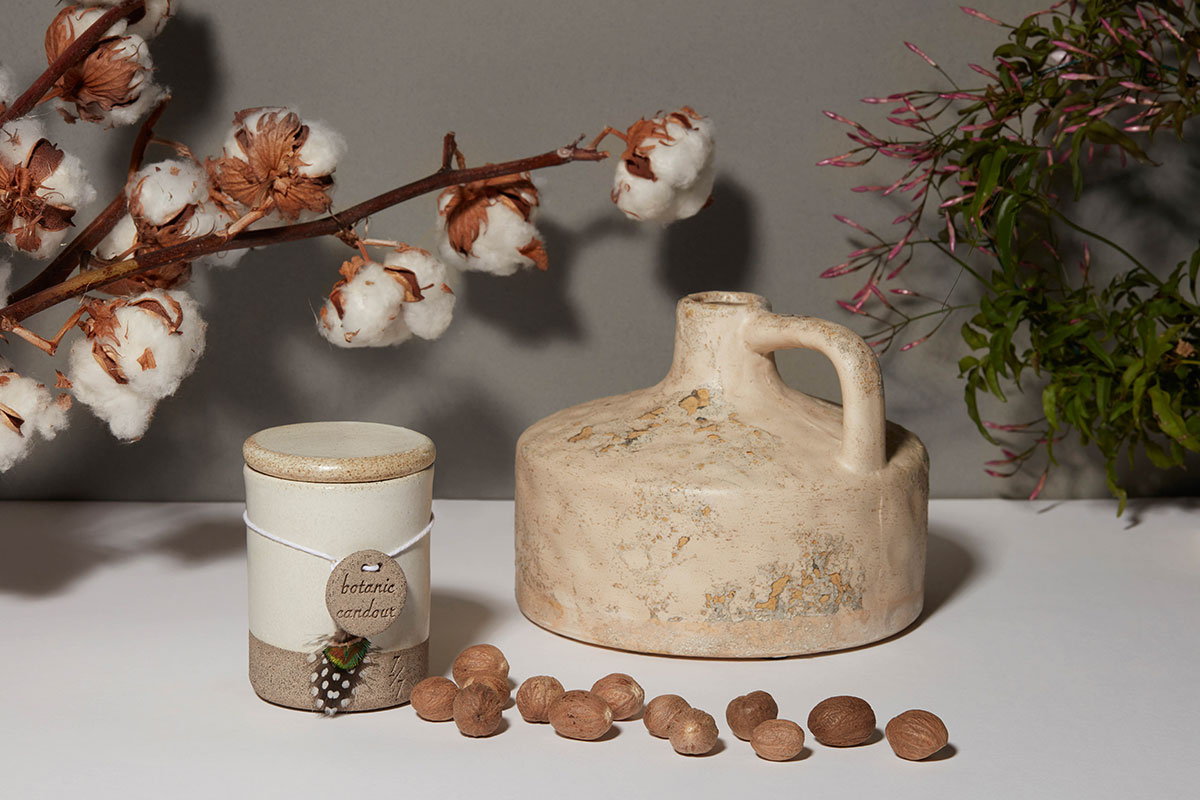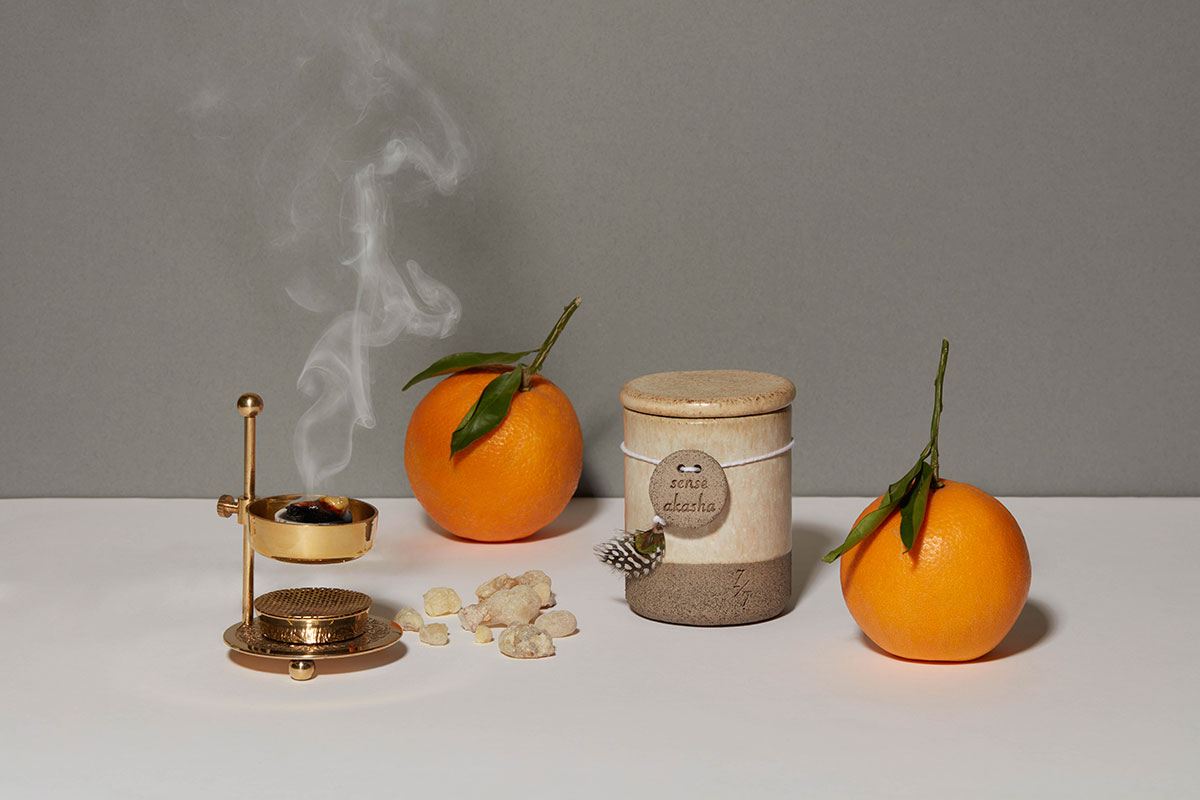This website uses cookies so that we can provide you with the best user experience possible. Cookie information is stored in your browser and performs functions such as recognising you when you return to our website and helping our team to understand which sections of the website you find most interesting and useful.
7 Over 7 founder Minal Bhanshali shares her 5 top tips for better meditation
By Minal Bhanshali | 19 August 2020 | Food & Drink
These scent-sational candles are designed to help relax and inspire for more mindful living

There is no right way to meditate. The point of meditation, for me, is to become mindless; to allow intuition to kick in and guide me. Experimentalism is the new-age spiritual approach, and so there are no rules. Try not to think of meditation as something that has an end goal or even that it has specific steps, as this can make it feel like a chore. Instead, aim for an activity or practise that allows you to reach a flow state – this could be a long cycle ride or run, or indulging in creative pursuit – where your thoughts of past and future melt into your awareness of nothing but the present moment. It could even be something as simple as taking time to savour your morning cup of coffee.
This doesn’t discount the benefits of the traditional Eastern way of sitting in meditation, of course, but when starting out it’s a great way to accustom the mind (and ego!) to the practice. Experiment and discover for yourself what feels right for you.
RITUAL MEDICINE
Our individual need for introspection and meaning has risen during the Covid-19 pandemic, with current times teaching us to reclaim self-isolation. Loneliness has been replaced with the term solitude, which is far more proactive and progressive.
When we take responsibility for the experiences we have and curate them for ourselves, they begin to feel like medicine. I created 7 Over 7 with the intention of wanting to get ritualistic to rise above routine. So, elevating any singular moment with simple details is, for me, my daily medicine. I personally like to apply this to my mornings, which have become gradually more ritualistic, but in no sense are they intricate. Just three to four simple steps.
Creating a ritual around a meditation practice also means it becomes more of something you look forward to instead of a chore or a tick box activity. It helps in transforming the meditative experience from a practice into a regular habit.
It doesn’t need to be elaborate and, no, you don’t need to set up a dedicated meditation room. It can be as simple as setting up a little station at the edge of your bed, with a meditation cushion, your favourite blanket or a crystal that helps channel energy. It is about setting an intention for the practice whether through an affirmation or a mantra. I created each of the seven scented candles so that they hold an intention to bring balance and restore a sense of purpose with ingredients that evoke specific emotions: from feeling expansive and authentic to feeling grounded and wilful. Being mindful with sense gratification heightens our experience and when used in meditation it can allow us to go deeper into that state of flow. >>
Get 25% discount when you shop at 7 Over 7 with exclusive code: Tempus77

Start small with 5 – 10 minutes and then build up your practice. The most ideal way to start is trying meditation after a yoga practice. Yoga (asanas) postures were designed by the ancient yogis to enable the body to sit a meditative state for long periods of time and to help channel the energy from the ground up. So, after yoga is the most ideal time when the body and mind are more receptive to the benefits of meditation. Create a space and a little ritual to your practice to make it more meaningful. Ensure there is a good flow of fresh air in the room, a dimmed light and it will help set an intention for your practice with a mood enhancing candle.
Ideally, it is good to have a practice being sat on the floor, propped by a cushion with your back straight and palms facing the ceiling. This posture is an openness to receive and enables a better flow of energy from the root of the spine to the crown of the head. If you don’t have the flexibility to sit cross-legged, you can sit on a chair but always make sure you hold your back straight and support the base of your spine with padding if needed.
The most important things to bear in mind are:
– The intention you set when you go into the practice
– The object isn’t to control your mind – it is to detach from it by just becoming more aware and being aware what comes up from your subconscious mind but not dwelling on it
– Ease into the practice and let your breath guide you. When in doubt, just go back to the natural rhythm. Always inhaling deeply and exhaling completely
– Ideally, I would recommend practicing mediation as you would any form of fitness – 3 – 4 times a week and building up a daily practice if it is something you feel you benefit from. You can mix it up just like you do with fitness – a longer guided meditation one day, followed up a shorter transcendental practice another. There are no rules.
GET OUT INTO NATURE
Ideally at very start of your day, even if just for a few moments and before you’ve allowed any outside stimulus in (yes, that means not checking your phone, emails etc). With no emotionally charged scroll or rush of over-stimulation, but just the simplicity of nature, you can now tap into the quiet and stillness of the new day. As you step out allow your senses to take in the natural world around you, starting with something as simple as dew drops on a nearby plant or the sound of birdsong.
Breath is our life force (known as ‘prana’ in Sanskrit) and it nourishes us far beyond keeping our bodies oxygenated. I like to visualise bright white light entering the body as I breathe in and smoke coming out as waste and anything that no longer serves me.
If you really can’t get out, then look out onto the horizon at least once a day – tune into the sense of feeling expansive, it is the essence of what I feel meditation allows us to do. Do go beyond ourselves and feel limitless. >>
Get 25% discount when you shop at 7 Over 7 with exclusive code: Tempus77

FILE, SAVE AS….
The biggest challenge in meditation are those pesky thoughts that come from seemingly out of nowhere. The goal of course is simply to acknowledge them but not dwell. I have learnt that by commanding my subconsciousness mind to ‘file’ the thought or ‘save as review for later’, allows the thought to naturally dissolve without much effort, bringing me back to the practice. It also means the thought doesn’t rear its head again mid-flow.
INTENTIONAL INTROSPECTION
As we enter a new age of minimalism, which is more about experiencing the world around us directly and engaging with our surroundings more intentionally, it has never been more important to be intentional in what we consume. I try to follow an information diet at least twice a week whereby I limit the amount of information I allow into my psyche. It prevents that sense of overwhelm, which is often accompanied by anxiety and fear putting our bodies into flight or fight mode and thus crippling our immune system and with it, our natural ability to heal.
It is important to satiate that longing for less stimulus so you can go within and reset. Non-stop digital distractions equate to unprocessed thoughts that fly around constantly distracting the mind and rearing their ugly heads when you try to retreat in meditation.
Dopamine fasting – halting any form of stimulation for 24hours – is voluntary sense deprivation, whether it is going for a day without engaging in social media, a juice or water only cleanse, or abstaining from speech or being intimate with another.
I like to practice Mauna (practicing silence) which allows me to become more aware of my thoughts. The practise encourages more considered interactions with people and also responding to others rather than reacting when you come out of Mauna. Any sense fast makes room for greater introspection for the simple reason that when our bodies are not processing outside stimulus, they are better able to channel the energy that is within towards a greater state of awareness that isn’t mired in the minutiae but more so the vastness and infinite nature of reality.
Unplug, connect grow. Allow yourself to unpack the world that resides within.







